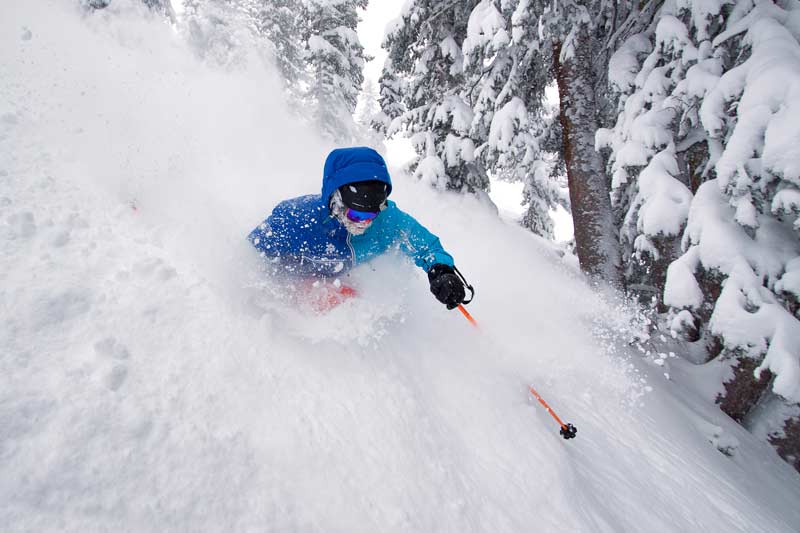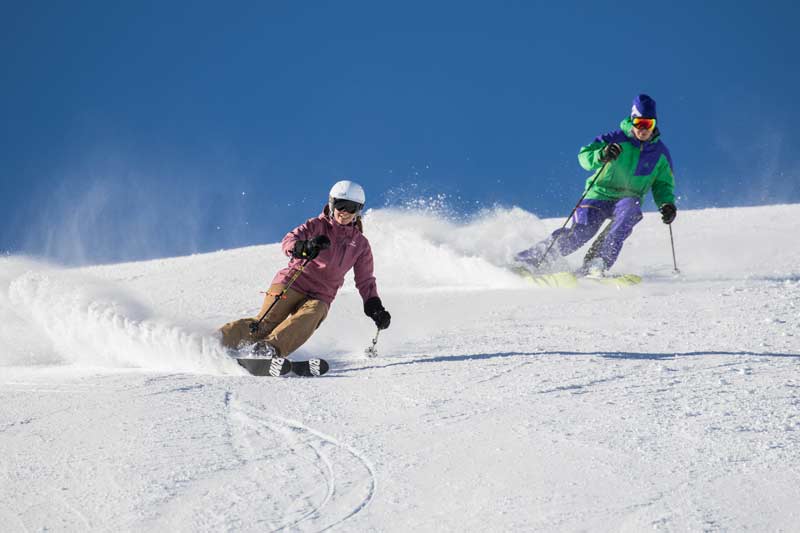Soft, quiet and smooth
The Salt Lake TribuneAn untracked canvas of deep white calls to Pat Harrington when snow falls. He longs to turn his body into a brush and use a mountain as a medium.
"It is what keeps me sane and what keeps me living in Utah," Harrington said last winter after a precious day of snowboarding at Snowbird Ski and Summer Resort.
For Harrington, riding Utah's famous powder might be as important as breathing, something he can't do well when the snow is deep and the turns are good.
"It is one of the best feelings a human being can experience," the Salt Lake resident said with snow and ice stuck to his beard and mustache. "The bottomless turn and not seeing anything for a split second and then coming out of that and having the rest of your run in front of you. It's why I'm proud to be from this beautiful state."

Photo courtesy of Chris Pearson
Utah trademarked the phrase "Greatest Snow on Earth" — seriously, legally trademarked it — and most locals have no reason to dispute the claim.
"I like to call it skiing on clouds," Samantha Ray said, looking a little out of place while wearing a tutu on the plaza at Snowbird. "It is so soft and smooth. You don't get any sounds, you don't get any scraping [like on icy snow]. It is all beautiful; smooth and quiet."
Surfers call the tube of the wave they are lucky enough to ride the "Green Room." Powder skiers call their version of the frozen liquid wave the "White Room." Another fun term is snorkeling, which provides the funny image of skiers so surrounded in splashing powder that they need a snorkel just to breathe.
"The powder is so light you just blow through it," Tony Coop said. "It is up in your face; in your nose. If you fall you are kind of laughing and giggling. It's as much fun as you can have with your clothes on."
Coop's favorite powder-day scenario is a little selfish, but most hard-core powder skiers readily admit to being protective of their powder.
"My perfect day is the day after a big storm and you got stuck up here the night before and no one can come up," the Cottonwood Heights resident said. "The lines are short, the powder is deep and the sun is out."
Coop has had "a few of those days, but not enough" in his 47 years of skiing in Utah.
Ian Shen, 16, likes to ski powder through trees on steep terrain.
"It's like you aren't really connected with anything," the Holladay resident said. "On a steep downhill with nothing but powder it just feels like controlled falling. It is quite fun."
Utah's 14 resorts all provide opportunities for lift-served powder days each winter, but countless acres of backcountry on public lands also have secret caches of "POW." When visiting out-of-bounds areas always make sure to check the Utah Avalanche Center's website for updates on conditions and ways to avoid avalanches.
Resorts average roughly 4 million skier days [a day spent at the resort by one skier] each winter. Nathan Rafferty, president of Ski Utah, says residents turn in about half of those days while tourists turn in the other half.
"It is different for somebody who comes from out of town. Our expectations are high; some of us need more than 10 inches of snow and it has to be really good snow. And sometimes it needs to be really good snow on top of really good snow. We are so spoiled here," Rafferty said.
Most tourists are much easier to please. Some people consider 2 inches of the fluffy stuff on a groomed run a powder day.

Photo courtesy of Chris Pearson
"A huge powder day is not on everybody's bucket list. The deep stuff can be intimidating," Rafferty said.
But it doesn't intimidate Rafferty, who grew up in the Salt Lake Valley and learned to ski at a young age.
For him, the best days are the ones that deliver unexpected depth.
"I like the ones that sneak up on you," he said. "When the snow report says 5 inches and it actually is 9 and it feels like 15. Those days are special."
While he would definitely not turn around and head home if one of those unexpected days turned up, Harrington likes to track possible deep powder days with his skiing buddies.
"I have the NOAA [National Oceanic and Atmospheric Administration] app on my phone and I track it," he said.
Harrington had started his day last winter by driving to the mouth of Little Cottonwood Canyon at 6:45 a.m., then waiting for avalanche control work to end so he and a friend could drive to Snowbird.
"We were still getting the goods at 3:45 p.m. It was like this all day," he said making swooshing sounds and waving his arms to show how the powder was flying past his head. "I'm even taking a little souvenir home to family members who couldn't come today."
And with that, Harrington headed to his car in an effort to get home before the snow in his facial hair melted.
